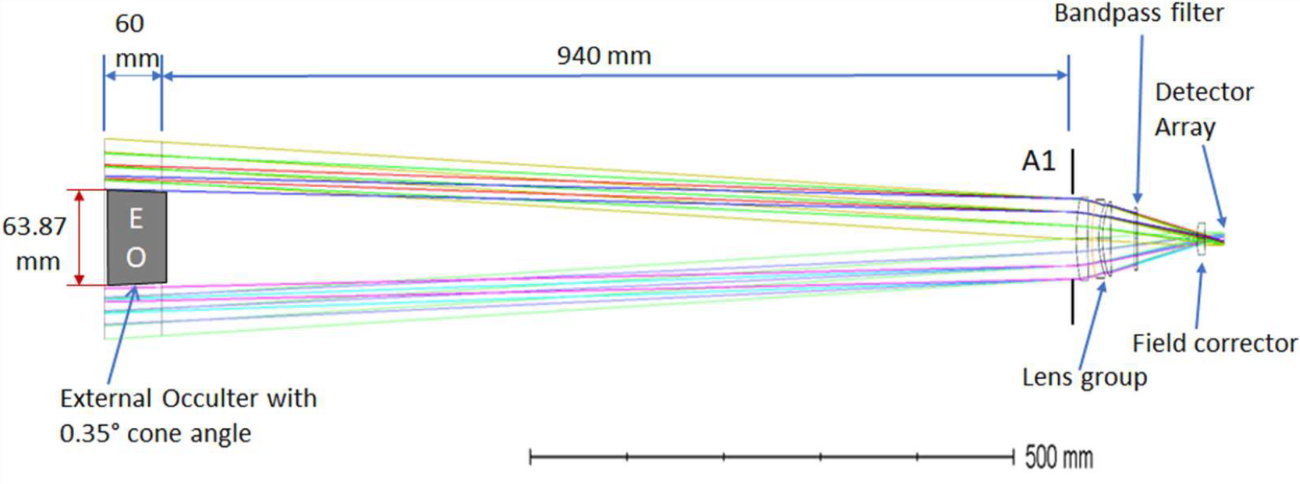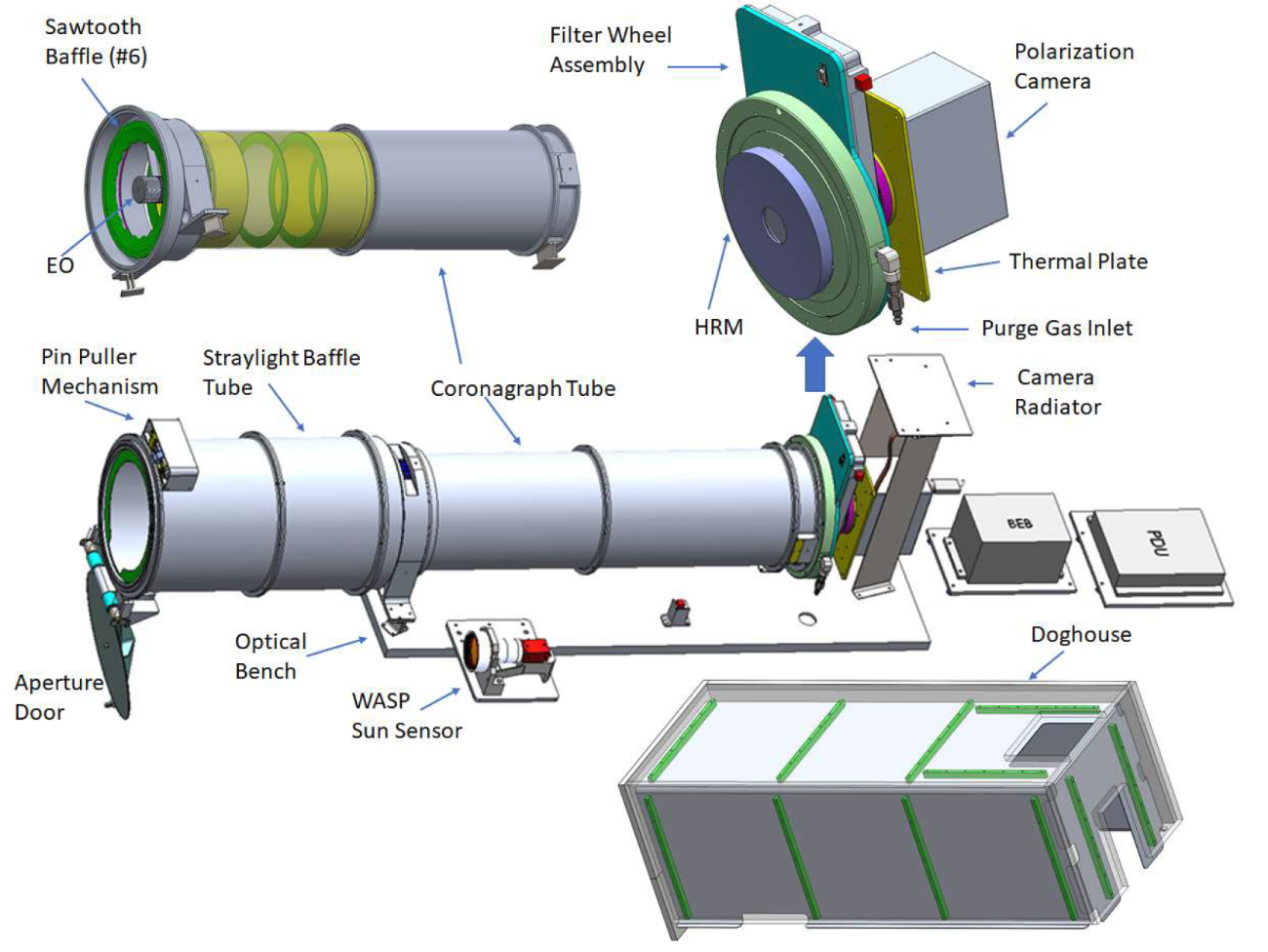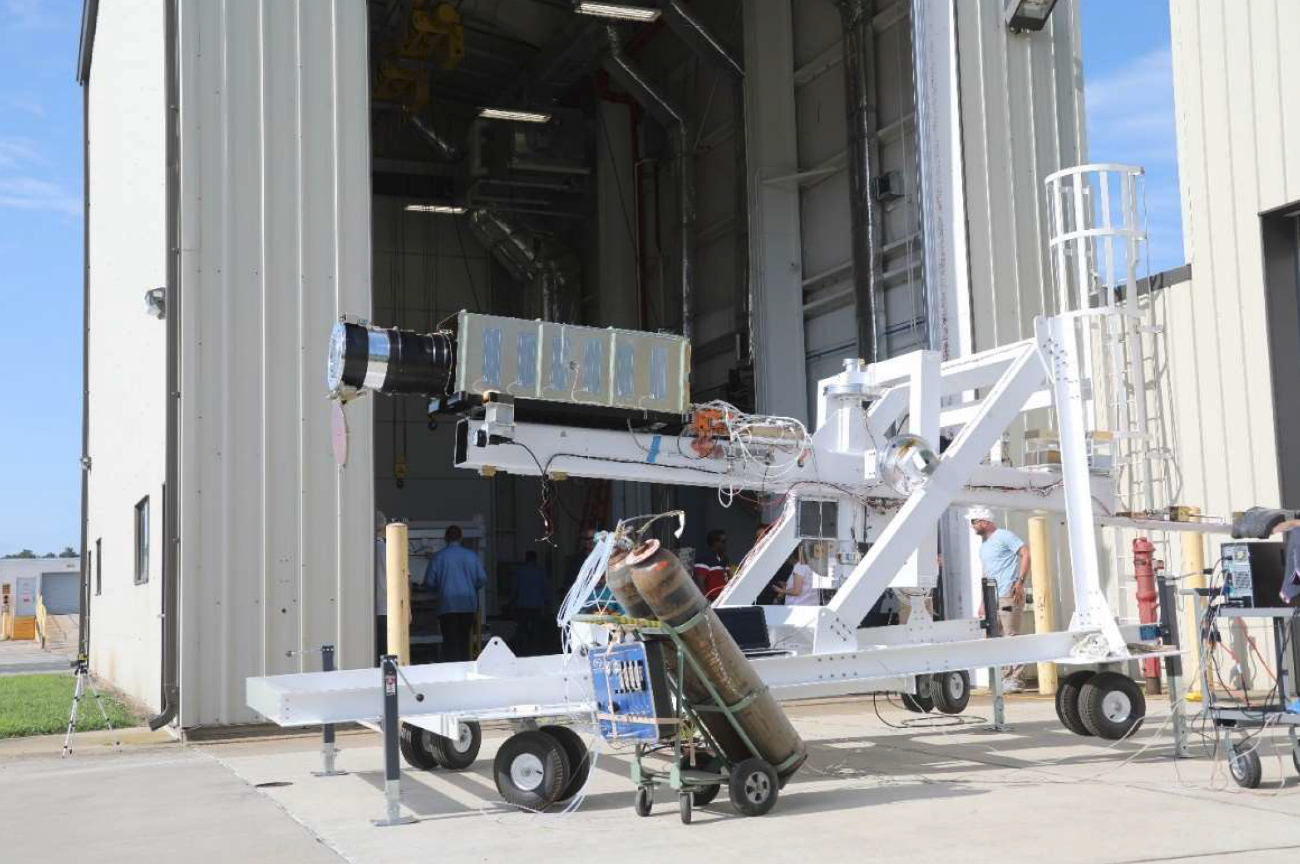The instrument, BITSE COR is an externally occulted single-stage coronagraph that images the solar corona at the blue end of the solar spectrum. Single stage means that the optical system does not have an internal occulter and a Lyot stop employed in traditional multi-stage coronagraphs. The coronagraph consists of an optical assembly, an external occulter (EO), straylight baffles, a heat rejection mirror, a filter wheel, and a polarization camera. EO blocks the photosphere and the inner corona at a heliocentric radius of 1.5 Rs, which is smaller than the specified inner field of view (FOV) cutoff at 3.0 Rs. The inner cutoff is determined by a circular occulter mask attached to the detector array. A1 aperture has a diameter of 50 mm. The 1-m separation between the A1 aperture and EO is to reduce vignetting. Coronal light is focused by the lens group and imaged at the detector array after passing through the bandpass filter and the field corrector lens.

A heat rejection mirror (HRM) is located in front of the lens group and the filters are inserted after the lens group. HRM images the sunlight in the gap between the EO and the telescope-tube baffles and reflects it back to the sky. The main coronagraph tube is 1004 mm long with a diameter of 260 mm. The external occulter is located at the front edge of the coronagraph tube. BITSE COR also has a 607 mm long and 343 mm diameter straylight baffle tube to prevent glint from the balloon/gondola or earthshine enter the coronagraph. The coronagraph has only two flight mechanisms: aperture door (one-time opening) and a filter-wheel rotator. A thermal enclosure (“doghouse”) covers the coronagraph over the base plate from the polarization camera at the backend to the front end of the coronagraph tube. The straylight baffle tube is not covered by the thermal enclosure. The camera is mounted onto the aft section of the assembly and a thermal radiator is used to cool the camera’s CCD. The camera enclosure is placed inside a 1-atm pressure vessel because the camera is not vacuum compatible. A base plate (optical bench) supports the instrument assembly, the Sun sensor, and a thermal enclosure. Also mounted on the base plate are the aperture-door controller box and the master reference cube for alignment. The base plate, the BITSE electronics box (BEB), and the power distribution unit (PDU) are mounted on the 10-inch telescopic beam, which is part of the WASP system mounted on the balloon gondola.

The Wallops Arc Second Pointing (WASP) system (http://sites.wff.nasa.gov/balloons/technology_wasp_details.html) provides <1 arc sec pointing accuracy and sub arcsecond pointing stability, much more than required by BITSE. The pointing is achieved by a rectangular, hollow telescope beam mounted on a gimbal system controlled by two opposing gimbal hubs per axis (pitch and yaw). The WASP system, the WASP avionics deck, the CSBF battery packs, and the science stack are accommodated on the gondola.


